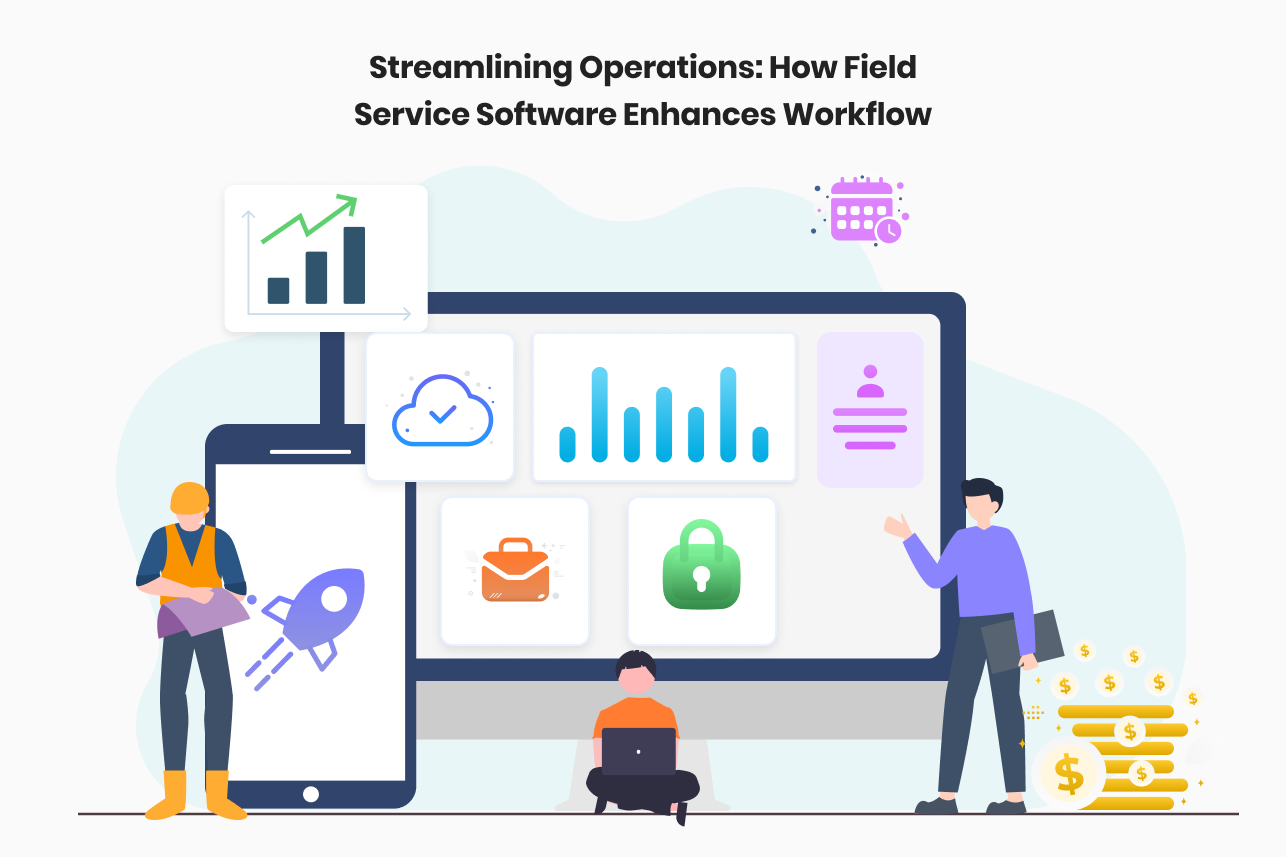In the ever-evolving landscape of modern business, the pursuit of operational excellence is a constant endeavor. For organizations with field service operations, the challenge lies in balancing efficiency with quality service delivery. In this digital age, the solution comes in the form of innovative field service software. This article explores how these technological advancements are reshaping the way businesses streamline operations and optimize workflows to meet the demands of today’s dynamic market.
Streamlining Operations with Field Service Software
Streamlining operations involves identifying and eliminating inefficiencies within workflows. Field service software serves as a comprehensive solution designed to automate and streamline various tasks involved in field operations. From scheduling appointments to dispatching technicians, managing inventory, and tracking job progress, these tools centralize all aspects of field service management, reducing manual effort and minimizing errors.
One of the key benefits of field service software is workflow optimization. By automating repetitive tasks and providing real-time visibility into field operations, businesses can optimize resource allocation, reduce downtime, and improve overall efficiency. With features like intelligent scheduling and route optimization, field service tools ensure that technicians are dispatched to jobs in the most efficient manner, minimizing travel time and maximizing productivity.
Enhancing Workflow Efficiency
Field service software enhances workflow efficiency by providing a centralized platform for communication and collaboration. Through mobile applications, technicians can access job details, customer information, and service history while on the field, eliminating the need for paper-based processes and enabling faster decision-making. Real-time updates and notifications keep all stakeholders informed, facilitating seamless coordination between dispatchers, technicians, and customers.
Moreover, field service tools offer advanced analytics and reporting capabilities, allowing businesses to gain valuable insights into their operations. By analyzing key performance indicators such as response times, job completion rates, and customer satisfaction scores, companies can identify areas for improvement and implement strategies to optimize their workflows further. This data-driven approach enables continuous refinement of processes, leading to greater efficiency and customer satisfaction.
Key Features of Field Service Software
Field service software encompasses a wide range of features designed to streamline operations and enhance workflow efficiency. Some of the key features include:
Appointment Scheduling: Automate the scheduling of service appointments based on technician availability, location, and skill set.
Dispatch Management: Efficiently assign and dispatch jobs to field technicians, taking into account factors such as proximity to the job site and workload.
Mobile Access: Empower technicians with mobile applications that provide access to job details, customer information, and navigation tools.
Inventory Management: Track inventory levels in real-time and ensure that technicians have the necessary parts and equipment to complete their jobs.
Route Optimization: Optimize technician routes to minimize travel time and fuel costs, maximizing productivity and efficiency.
Work Order Management: Create, assign, and track work orders from initiation to completion, ensuring that jobs are completed on time and within budget.
Conclusion
In conclusion, field service software plays a crucial role in streamlining operations and enhancing workflow efficiency for businesses with field service operations. By automating tasks, optimizing resource allocation, and providing real-time visibility into field operations, these tools empower companies to deliver exceptional service experiences while maximizing productivity and profitability. By embracing field service software, businesses can stay ahead of the competition and meet the evolving needs of their customers in today’s dynamic business environment.
